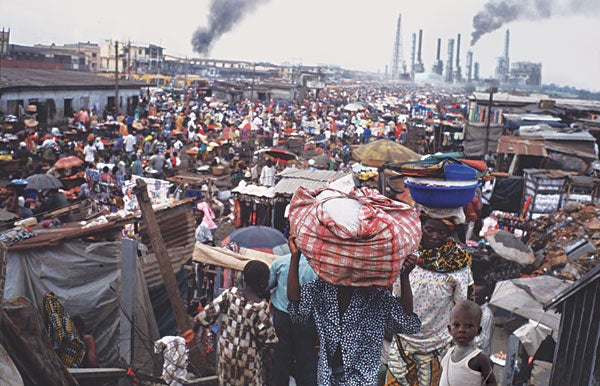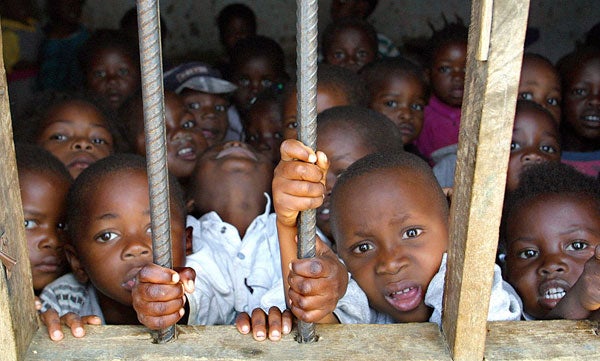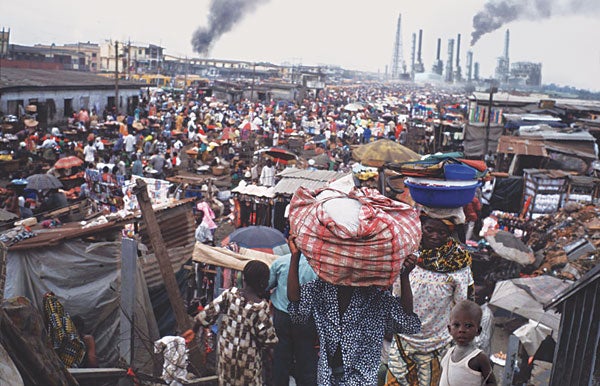LAGOS, NIGERIA— Emergency-management personnel are calling the population explosion that ripped through this already densely populated coastal city last week “an unparalleled natural disaster” and fear the mounting life toll will only grow as tiny bodies are discovered among the human wreckage.

“It’s hard to put into words what we’re seeing here,” said Dr. Marceline Klurfeld, a World Health Organization pediatrician who was assisting in relief efforts but found herself “utterly helpless” to stop the senseless beginning of human life she saw unfold around her. “You can’t comprehend the effect that a wave of impregnation of this magnitude can have on a country like Nigeria. The long-term consequences are yet to be seen, but I fear it won’t recover from this disaster for decades, if ever.”
Nigeria’s population, already the highest in Africa, is believed to have increased by eight percent in the wake of the explosion. With hundreds still clinging to life, that number is only expected to rise.
UN officials remain unsure what caused the population explosion, but point out that border disputes with neighboring Chad and Niger have temporarily cooled heroin and cocaine trafficking, and mass slaughter at the hands of a traditionally military government has fallen to its lowest levels in 18 years.
“What we saw was an almost immediate spike in the birth rate that ejected thousands—perhaps tens of thousands—of human beings into an inhospitable, frequently toxic environment,” said Health Minister Olsann Danseidalu. “What’s more, this burst of fecundity scattered human debris across the nation—debris infected with hepatitis A, typhoid fever, meningococcal meningitis, lassa fever, and malaria.”
According to Danseidalu, only a fortunate 110 of every 1,000 were unable to survive the tragedy.

The human fallout is expected to produce crippling long-term effects for Nigeria, including continuing devastation of the nation’s crops, already-inadequate drinking water, a vanishing rainforest, further strain on its barely existent infrastructure, and increasing quantities of raw sewage flowing into crowded streets.
“The products of the population explosion have an estimated 27-year half-life, and there’s every chance that their presence in the Nigerian environment could trigger future explosions,” Klurfeld said. “All we can do now is try to help the living cope with the aftermath.”
“At the rate new lives are accumulating, we just can’t keep up,” said Nigerian Air Vice Marshal Femi Gbadebo, who has, over the years, helped save thousands from the horrors of ongoing Nigerian life. “We will redouble our efforts, but this is human fertility at a level that even our most aggressive military initiatives cannot contain. Our armies don’t have the budget or equipment to mount life-stoppage efforts on the scale these people need.”
Further exacerbating the tragedy is the knowledge that the explosion could have been prevented, or at least controlled, with a simple and effective stopgap, according to Klurfeld. “A distribution program of good-quality, eight-cent rubber gaskets, which have proved successful in other nations, could have stopped this nightmare from ever occurring,” she said.
Danseidalu, currently touring the disaster area, called the scene “a tragic torrent of life.”
“I can’t tell you which of the horrific sights I have witnessed is the most heart-rending—the squalor in the camps, the frightened cries of the newly born, or the defeated, broken looks on the faces of those who realize they’re going to live,” Danseidalu said.
“No mother wants to outlive her child,” said 24-year-old Bayo Ogholi, a victim of the explosion and mother of a newborn baby. “So I am praying that God will spare both of us from this hell on Earth.”







